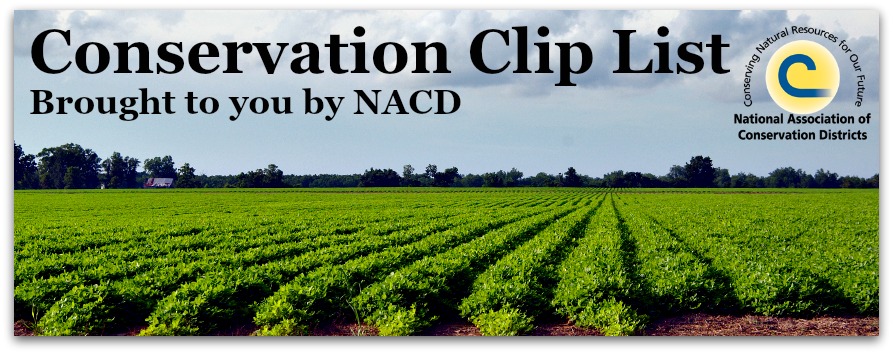
Conservation Clip List is a weekly collection of articles distributed by NACD that provides our members and partners with the latest news in what's driving conservation. If you have a relevant submission, please contact your NACD Communications Team.
Calaveras voters approve Resource Conservation District via The Union Democrat
Calaveras County voters on Tuesday approved Measure A, which allows for the establishment of a Resource Conservation District. The measure passed with 6,421 yes votes and 4,445 no votes.
The enormous threat to America’s last grasslands via The Washington Post
In the mid-2000s, a perfect storm of conditions led to a decade of grassland destruction in North Dakota’s share of the prairie pothole region, a vast expanse of grassland and wetlands that stretches from eastern Alberta to northern Iowa. Corn and soybean prices were high, climate change had extended the growing season and genetically modified crops could now survive in the northern plains. And then the oil boom hit.
NACD Joins Miracle Gro in Water Conservation Initiative via WNAX
The National Association of Conservation Districts has entered into an agreement with the Scotts Miracle Gro Company to help educate homeowners on water conservation. NACD President Lee McDaniel says agriculture is at the forefront of conservation and has the expertise along with private business to help landowners do their part in practicing good conservation.
Senate panel OKs EPA bill to block WOTUS rule, species listings via AgriPulse
The Senate Appropriations Committee advanced a fiscal 2017 spending bill that would block the Obama administration's “Waters of the United States” rule, curb work on greenhouse gas regulations and bar some endangered species protections.
Invest in soil to reduce greenhouse gas emissions via The Sacramento Bee
(opinion) We need a new conversation on soils, the foundation of our agricultural heritage. This discussion should include their current condition, their historic role and their promise to ensure the survival of humans and the planet.
Keep a Live Root in the Soil, or “A Radicle Idea” via USDA NRCS
(video) Carbon feeds the soil microbes, which enable nutrient cycling and other functions critical to plant health. Dr, Kloot explains that through the process of photosynthesis, plants convert carbon dioxide into carbohydrates – exuding a sizeable portion of those carbohydrates through the roots to feed microorganisms in the soil. To maximize the benefits of this remarkable symbiotic process, farmers and gardeners should keep a living root in the soil throughout the year to feed those soil microbes, Dr. Kloot says.
Wildlife biologist talks about restoring wildlife habitat via Jackson County Chronicle
The survival of monarch and Karner blue butterflies and other wildlife greatly depends on the private landowner. With the majority of land ownership resting in private hands, landowners who want to restore their land to benefit wildlife can partner with the U.S. Fish & Wildlife Service to reach their goals, according to a recent presentation.
Dear Conservatives, You Can Go Green Again via The New York Times
(opinion) Conservatives used to be almost by definition conservationists, focused on preserving our shared heritage from destructive influences… So what does it take to bring conservatives back, after a quarter-century of their reflexively treating even the mention of environmental issues as a treasonous attack on business and the nation? It’s possible they are already returning, with the House of Representatives last month approving a major environmental reform by an astonishingly bipartisan 403 to 12 margin, and the Senate almost certain to follow.
Group calls for Congress to investigate Calif. water plans via KRCR News
A non-profit is asking Congress to investigate California's plans to divert drinking water to protect endangered species.
Supporting pollinators could have big payoff for Texas cotton farmers via phys.org
According to a new study by The University of Texas at Austin, increasing the diversity of pollinator species, including bees, flies and butterflies, can dramatically increase cotton production. The researchers estimate that in South Texas, the region they studied, increasing the diversity of pollinators could boost cotton production by up to 18 percent, yielding an increase in annual revenue of more than $1.1 million.
What’s carbon dioxide have to do with it? Via Farm and Dairy
The Medina Soil and Water Conservation District received a small grant to assist farmers comparing cropfields for carbon dioxide emissions as a direct indicator of soil health.